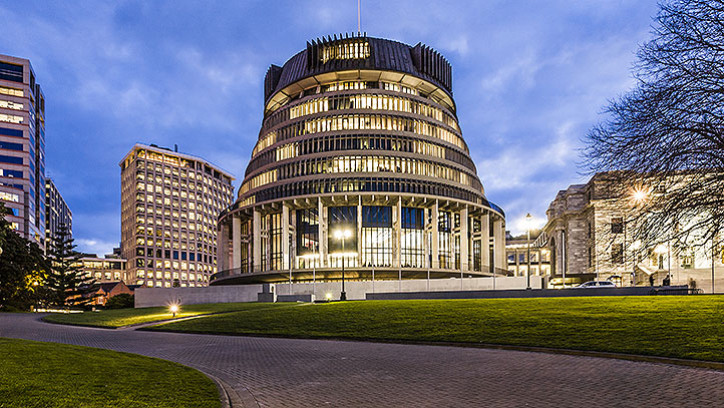New Building Code documents published on 2 November 2023
Posted: 2 November 2023

Protection from fire
The Ministry of Business, Innovation and Employment (MBIE) has amended Acceptable Solutions C/AS1, C/AS2, F7/AS1 and Verification Method C/VM2 to improve the safety of people from fire.
We have cited new versions of standards for the:
- design of sprinkler systems
- fire alarm systems
- interconnected smoke alarms
- smoke control in air-handling systems.
Interconnected smoke alarms
The amended Acceptable Solutions C/AS1 and C/AS2 now cite NZS 4514: 2021 for the installation of interconnected smoke alarms to improve the fire safety in new residential homes.
- F7/AS1 - Warning systems [PDF 496KB]
- C/AS1 - Protection from fire for buildings with sleeping (residential) and outbuildings (risk group SH) [PDF 2.7MB]
- C/AS2 - Acceptable Solution for Buildings other than Risk Group SH [PDF 8.2MB]
- C/VM2 - Verification Method: Framework for Fire Safety Design [PDF 2.8MB]
The transition period for these changes is 12 months, ending on 1 November 2024.
Fire safety system standards
New versions of the standards are already available on Standards New Zealand's website. MBIE sponsors free access to the fire alarm and interconnected smoke alarm standard.
- NZS 4512:2021 Fire detection and alarm systems in buildings - standards.govt.nz
- NZS 4514:2021 Interconnected smoke alarms for houses - standards.govt.nz
- NZS 4541:2020 Automatic fire sprinkler systems - standards.govt.nz
Plumbing and drainage
MBIE has amended the acceptable solutions and verification methods for E1 Surface Water, G12 Water Supplies, and G13 Foul Water. These changes support the provision of plumbing and drainage services which comply with the Building Code and help meet the safety and wellbeing objectives in the Building Act 2004.
These changes are the latest in a series of continuous improvements to ensure the Building Code compliance pathways for the plumbing sector are fit for purpose and up to date. Updates like these ensure New Zealanders have safe and reliable plumbing systems.
Changes to Acceptable Solution G12/AS1 include measures to lower the maximum hot water temperature delivered at the tap for most buildings from 55°C to 50°C and the introduction of additional temperature control devices to give plumbers more ways to limit hot water temperatures. These changes do not apply to the hot water used for kitchen or laundries nor do they apply to the temperature of hot water in the storage tank. The changes apply only to personal hygiene taps and baths in new buildings and new plumbing work. The G12/AS1 update also includes reducing the lead content in plumbing products.
The transition period for these changes is 12 months, ending on 1 November 2024 with the exception of lead in plumbing. This will have an extended transition date until 1 September 2025.
Plumbing and drainage standards
Key to these amendments is the adoption of the latest version of the AS/NZS 3500 plumbing and drainage standards as part of the compliance pathways. MBIE participated in the development of these standards. The new versions of the standards include a number of New Zealand-specific requirements meaning that several of the previous New Zealand Building Code modifications to the standards are no longer required. These standards are cited as compliance pathways in several acceptable solutions.
- AS/NZS 3500.1:2021 Plumbing and drainage, Part 1: Water services - standards.govt.nz
- AS/NZS 3500.2:2021 Plumbing and drainage, Part 2: Sanitary plumbing and drainage - standards.govt.nz
- AS/NZS 3500.3:2021 Plumbing and drainage, Part 3: Stormwater drainage - standards.govt.nz
- AS/NZS 3500.4:2021 Plumbing and drainage, Part 4: Heated water services - standards.govt.nz
Structure
MBIE has modified the citation of the New Zealand Standard NZS 3101.1: 2006 within B1/VM1 Paragraph 3.1.1. The change deletes Clause 18.7.4.4 of this Standard from the verification method and means that the use of the standard for the design of the supports of hollow-core floors is now considered to be an alternative solution.
This change to B1/VM1 comes into effect on 2 November 2023, with no transition period.
Energy efficiency
The staged implementation process for window and door insulation requirements for new residential buildings has now ended. All areas of the country now have similar levels of window performance in H1/AS1 and H1/VM1.
What's Next?
MBIE regularly consults on, and updates, the Building Code acceptable solutions and verification methods to ensure it keeps pace with modern methods of construction, products and technologies.
MBIE is committed to updating the Building Code so that it keeps pace with innovation, current construction methods and the needs of modern society. The Building Code provides clarity, certainty and consistency to the building and construction sector.